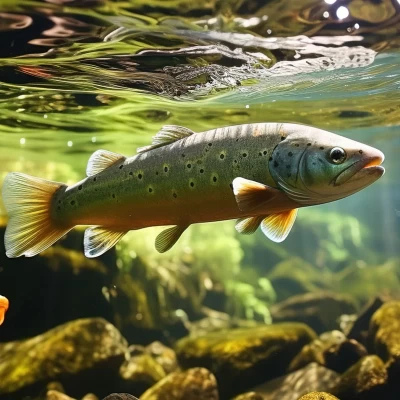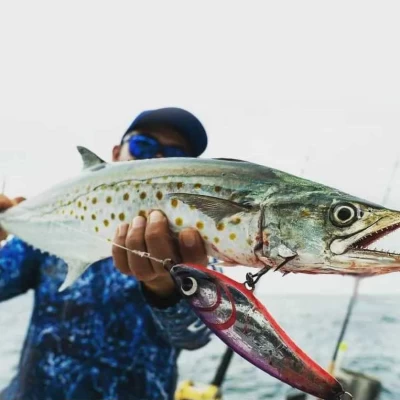Catch and Release in Türkiye: Common Myths and 10 Best Practices for a Safe Return
Catch and release is a widely used practice among anglers who aim to conserve fish populations and maintain a healthy aquatic ecosystem. However, if not done correctly, released fish may experience high mortality rates, making the effort counterproductive. In some cases, a poorly handled release can be more harmful than harvesting a small number of fish within legal limits.
This guide outlines the key principles of responsible catch and release that every angler should follow to maximize survival rates and ensure fish can continue to thrive. These practices are particularly important in Türkiye, where the country’s diverse marine and freshwater ecosystems support a rich variety of fish species that are essential to both local biodiversity and recreational fishing.
The Importance of Catch and Release
When done properly, catch and release is a crucial tool for sustainable fishing. With increasing fishing pressure on Türkiye’s lakes, rivers, and coastal waters, responsible angling practices help maintain fish populations for future generations. If we want to continue enjoying fishing as a sport and recreation, we must be mindful of the impact we have on the ecosystem.
By improving our handling techniques and following best practices, we contribute to the conservation of a valuable resource. Every time we release a fish correctly, we increase the likelihood that it will survive, grow, and reproduce, ensuring a thriving fishery for years to come.
Common Myths of Catch and Release
Myth 1 – If the Fish Swims Away, It’s Fine
Many assume that as long as a fish swims off after being released, it will survive. Unfortunately, a significant percentage of post-release mortality occurs after the fish has left an angler’s sight. Stress, exhaustion, and improper handling can lead to delayed death hours or even days later. Using proper techniques dramatically increases the fish’s chances of survival.
Myth 2 – It’s Okay if the Fish Is Out of Water for a Short Time
Even a brief period out of water can cause significant stress to a fish. Laying it on rocks, grass, or dry surfaces can remove protective slime, making it vulnerable to infection. Keeping the fish submerged or minimizing air exposure greatly improves its chances of recovery.
Myth 3 – Catch and Release Is Just for Elitists
Some anglers believe that those who practice catch and release look down on others who keep fish. In reality, responsible catch and release is about conservation, not competition. The goal is to sustain fish populations while allowing those who enjoy fishing to continue doing so. Many anglers practice a balance of keeping some fish for consumption while releasing others to maintain a healthy fishery.
Myth 4 – Catch and Release Is Only About Ethics
Catch and release isn’t just about personal beliefs; it’s a scientifically backed conservation practice. Studies show that proper handling and release techniques significantly improve survival rates. Anglers are stewards of the waters they fish, and practicing good catch and release methods benefits everyone who enjoys the sport.
Good Preparation Protects the Fish
1 – Be Aware of Water Temperature
Warm water increases stress on fish. If water temperatures are high, fish become more vulnerable to exhaustion and mortality. Avoid fishing in extremely warm conditions or limit the duration of the fight to prevent unnecessary stress.
2 – Use Hooks That Minimize Damage
Using barbless hooks or hooks designed for easy removal reduces injury and handling time. A hook that can be removed quickly decreases stress and improves the fish’s survival rate.
Playing the Fish Correctly
3 – Land Fish Quickly and Efficiently
The longer a fish struggles, the more lactic acid builds up in its muscles, leading to exhaustion. Use appropriate tackle to minimize the fight time and bring the fish in as quickly as possible.
4 – Use Gear That Reduces Stress on Fish
Using heavier fishing line or leader allows you to land fish faster, reducing exhaustion and improving post-release survival. Avoid using tackle that unnecessarily prolongs the fight.
Landing the Fish
5 – Keep the Fish in the Water
Handling a fish while it’s in the water reduces stress and prevents damage to its protective slime. Avoid placing the fish on dry surfaces and never let it flop around on rocks or docks.
6 – Use a Rubber Landing Net
Traditional knotted nets can remove slime and injure fish. A rubber or soft-mesh net is the best option for safely landing and handling fish without causing unnecessary harm.
Handling the Fish
7 – Avoid Excessive Pressure When Holding
Fish are fragile, and squeezing too hard can cause internal injuries. Hold the fish gently with wet hands to minimize damage.
8 – Cut the Line if the Hook Is Deep
If a fish has swallowed the hook deeply, cutting the line is often safer than trying to remove it. In many cases, the hook will dissolve or dislodge on its own over time without causing severe harm.
Photographing Fish Responsibly
9 – Limit Air Exposure and Be Quick with Photos
If you want to take a photo, keep the fish in the water until you are ready. Lift it briefly, take a quick shot, and return it immediately. A wet fish glistening with water looks better in photos than one drying out in the sun.
Not every fish needs a photo. Selectively choosing a few fish to photograph can make your collection more meaningful while also minimizing stress on the fish.
Releasing the Fish Safely
10 – Allow Fish to Recover Before Release
Before letting a fish go, make sure it is strong enough to swim away. Hold it gently in the water, facing into the current if applicable, and let it regain its strength. If the fish struggles to maintain its balance, continue to support it until it is ready to swim off on its own.
That moment when a fish confidently swims away is one of the most rewarding parts of fishing. Knowing you have done your part to ensure its survival allows the joy of the catch to continue for the next angler.
By following these best practices, anglers in Türkiye can help preserve fish populations while still enjoying the sport they love. Responsible catch and release techniques benefit both the environment and future generations of anglers. Let them go so they can grow!








